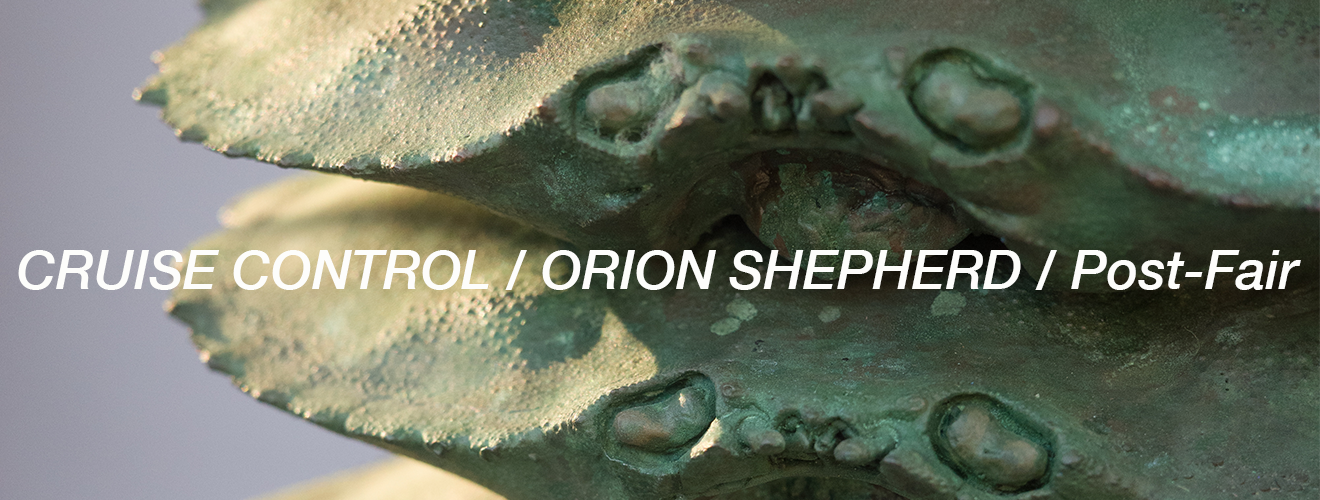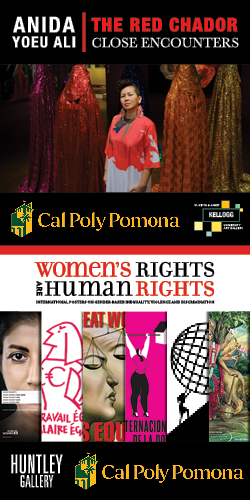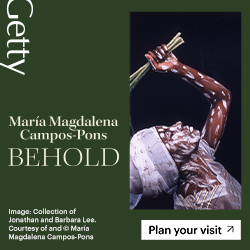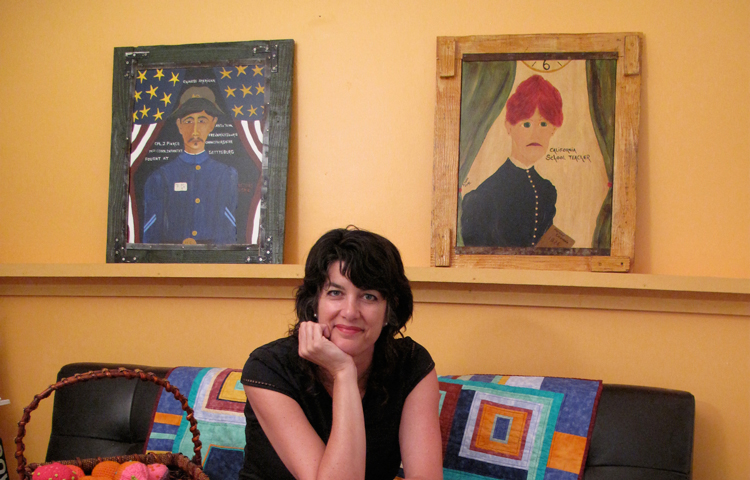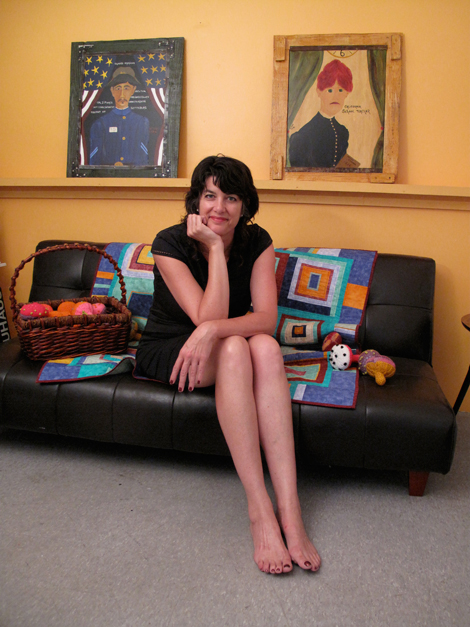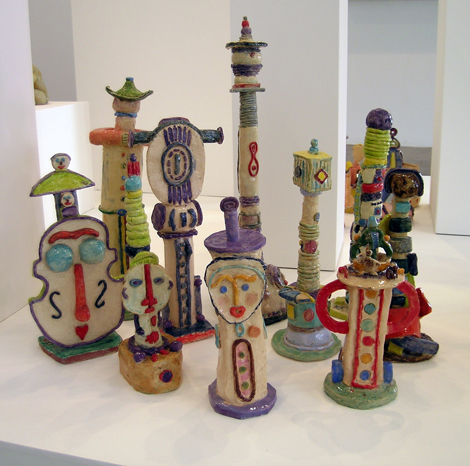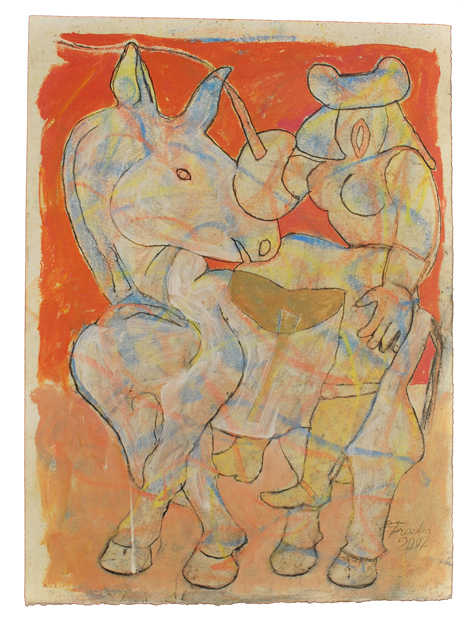“I understand and appreciate clean-made art, but what I’m mostly attracted to is something raw and more guttural. That’s what brought me to the outsider art world. Plus there’s no other gallery in LA that’s showcasing outsider art,” says Paige Wery, erstwhile golfer, art school dropout and part-time painter.
Since opening The Good Luck Gallery in March 2014, Wery, a statuesque brunette, has curated some dozen exhibitions, as well as hosting several salon-type events. Showcasing work in its airy, two-storey space by artists ranging from centenarian ceramicist Harry Steinberg, a retired surgeon; Vietnam War vet Elias Telles; and farmer-autodidact, Daniel Carlson—whose plants were displayed with Alexis Rose’s miniature porcelain pots—to shows dedicated to thrift store paintings, rare books and even a yarn-bomber happening, Wery, 46, is passionate about the genre.
“I first saw true outsider art on the Venice boardwalk in 2000, when I was doing paintings and mixed-media. People had mental disabilities, people were homeless, they’d never been to a museum and didn’t know anything about art history and yet they were there making art.”
Wery said she’d thought about going into the gallery business, but—full disclosure—she first did a six-year stint as publisher of this magazine.
“I’d already curated shows; and when I went to galleries all the time for the magazine, they all started to look the same. Part of my idea was to not only try something new as far as promoting people who needed help and needed to be told that ‘this stuff is worthy and let’s put it in a gallery and see what happens,’ but also to mix things up. It’s also fun to work with these people.”
Wery, born and raised in San Diego, where her mother was a crafter and collector, was also buoyed by the fact that works made without art-school training have recently been commanding a higher profile—and prices.
Outsider art was shown at the Venice Biennale for the first time in 2013, and in January Wery participated in New York’s Outsider Art Fair. Established 23 years ago, the event featured 50 international galleries of folk, self-taught and outsider art representing 27 cities and eight countries. Wery brought 21 works by the late Andrew Frieder, whose estate she recently acquired.
“I was happy to be introduced to that collector base who’d never heard of us—or Andrew. Established dealers came over and said, ‘This is amazing.’ But collectors said they were going to watch me—they don’t just plop down money—so we’ll see what happens.”
Frieder, who suffered from schizophrenia and died last year at 55, drew upon his illness to fill his mixed-media canvases with mythology-infused animals, skeletons and hybrid creatures.
“Taking on Frieder’s estate was a big deal,” noted Wery, “but we sold a handful of them for $2,200 each.”
The Good Luck Gallery, managed by Gina Stepaniuk, may be unique in LA, but galleries and museums across the country have been jumping on the outsider bandwagon. The Philadelphia Museum of Art mounted a show in 2013, and last November New York’s Metropolitan Museum of Art received a gift of 57 works of outsider art made by the Atlanta-based Souls Grown Deep Foundation. In addition, Washington, D.C.’s National Gallery of Art is organizing an exhibition examining the relationship between self-taught art and modern and contemporary work.
This is good news for Wery and her gallery, which has a homespun vibe, with quilts made by her mother and a smattering of books and small sculptures featured upstairs, while Art Maur’s voodoo-like fabric-and-string dolls line the staircase. Maur, who lives with a wild boar in Petaluma, will have a show at the Good Luck this year, and Helen Rae’s recent solo exhibition was a collaboration with Claremont’s First Street Gallery, a program for mentally and physically challenged people.
With prices ranging from as low as $5 for a Christopher Russell zine, to those priced from $1,000 to $2,000, Wery said she plans to bring in more expensive work.
“I think everything is moving in the right direction,” she said, “but it’s like being on a slow-moving train. Still, there are deals to be made, and the more attention this has gotten in the last 10 years, the values have gone through the roof for some.”
Wery cited outsider art stars, including former slave Bill Traylor, who died in 1949, and the late Henry Darger, a Chicago hospital custodian, both of whose works are now going for north of half-a-million dollars.
“The last year has been a wild ride,” Wery confessed, “and it’s difficult keeping a gallery going. But I feel lucky, and part of the reason I’m in Chinatown is that other galleries are here. It’s also one of my favorite places to see art. You can park your car, eat, have a drink and see all these different openings. But,” she mused, “I can’t imagine I will remain the only outsider art gallery in LA for very long.”

